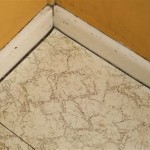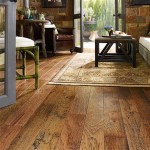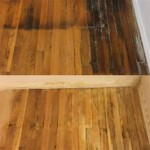Rubber Cork Flooring Reviews: A Comprehensive Guide
Rubber cork flooring has emerged as a popular choice for homeowners seeking a combination of durability, comfort, and sustainability. This innovative flooring material blends the resilience of rubber with the natural warmth and sound absorption of cork, offering a unique and desirable blend of benefits. This article provides a comprehensive guide to rubber cork flooring, exploring its key features, advantages, and considerations for potential buyers.
Key Features of Rubber Cork Flooring
Rubber cork flooring is a composite material that combines the best qualities of both rubber and cork. The rubber component provides durability, resilience, and resistance to wear and tear, making it ideal for high-traffic areas. The cork layer contributes to the flooring's natural warmth, sound absorption, and slip resistance, enhancing comfort and creating a more inviting atmosphere.
Rubber cork flooring is typically available in various styles and finishes, including tiles, planks, and sheets. The tiles and planks are often designed to resemble traditional wood or stone flooring, while sheets offer a seamless appearance. The flooring is also available in a wide range of colors and patterns, allowing homeowners to achieve their desired aesthetic and complement their existing décor.
Advantages of Rubber Cork Flooring
Rubber cork flooring offers a compelling set of advantages that make it a compelling option for various applications.
Durability and Resilience
The rubber component of rubber cork flooring provides exceptional durability and resilience. This material can withstand heavy foot traffic, furniture scuffs, and impacts without showing significant signs of wear and tear. This makes it suitable for use in high-traffic areas such as hallways, kitchens, and living rooms.
Comfort and Sound Absorption
The cork layer in rubber cork flooring contributes to the flooring's exceptional comfort and sound absorption. The soft, springy nature of cork provides a comfortable feel underfoot, reducing fatigue and enhancing the overall experience of walking or standing on the floor. Cork is also a naturally excellent sound absorber, effectively reducing noise levels and creating a quieter and more peaceful environment.
Slip Resistance
Rubber cork flooring is inherently slip-resistant, making it a safer choice for homes with children or pets. The cork layer provides a natural grip, reducing the risk of falls and accidents, especially in areas prone to spills or moisture.
Sustainability and Eco-friendliness
Both rubber and cork are sustainable and eco-friendly materials, making rubber cork flooring a responsible choice for environmentally conscious homeowners. Rubber is often made from recycled materials, reducing waste and conserving resources. Cork is harvested from the bark of cork oak trees without harming the trees, ensuring a renewable and sustainable source of material.
Allergy-Friendly and Antimicrobial
Rubber cork flooring is hypoallergenic and antimicrobial, making it ideal for individuals with allergies or sensitivities. The material does not harbor dust mites, pollen, or other allergens, creating a healthier indoor environment. Additionally, the natural properties of cork inhibit the growth of bacteria and mold, further contributing to a cleaner and healthier home.
Considerations for Rubber Cork Flooring
While rubber cork flooring presents many advantages, it is essential to consider certain factors before making a purchase.
Installation Cost
Rubber cork flooring can be more expensive than traditional flooring options such as laminate or vinyl. However, its durability and longevity can offset the initial higher cost in the long run.
Maintenance Requirements
Rubber cork flooring is relatively easy to maintain, requiring regular sweeping or vacuuming to remove dust and debris. For deeper cleaning, a damp mop with a mild cleaning solution is often sufficient. Avoid using harsh chemicals or abrasive cleaners, as these can damage the flooring.
Color and Pattern Choices
While rubber cork flooring is available in various colors and patterns, the selection might be less extensive than that of other flooring options. It is crucial to choose a style that complements the existing décor and personal preferences.
Suitability for Different Environments
Rubber cork flooring is generally suitable for various environments, including residential, commercial, and industrial settings. However, it is important to consider the specific needs of the application and choose a flooring type with appropriate durability and resistance to wear and tear.
Rubber cork flooring emerges as a compelling flooring option for homeowners seeking a combination of durability, comfort, and sustainability. Its unique blend of rubber and cork provides exceptional resilience, sound absorption, and slip resistance, while its eco-friendly nature aligns with responsible building practices. By carefully considering the advantages, considerations, and installation requirements, potential buyers can determine if rubber cork flooring meets their specific needs and preferences.

Rubber Cork Flooring Boulder Jelinek

Rubber And Cork Flooring Arctic Mist Jelinek

Rubber Cork Flooring River Rock Jelinek

Cork Flooring Guide Specifics Pros Cons Fantastic Handyman Au

Rubber Cork Flooring Seafoam Jelinek

Rubber Cork Flooring Purple Haze Jelinek

Rubber Cork Flooring Jelinek

Rubber Cork Floor Maintenance Eco Interior

Rubber Cork 2mm 10m2 107 63 Sqft Diy At B Q

Cork Rubber Lordship Flooring Company
Related Posts








